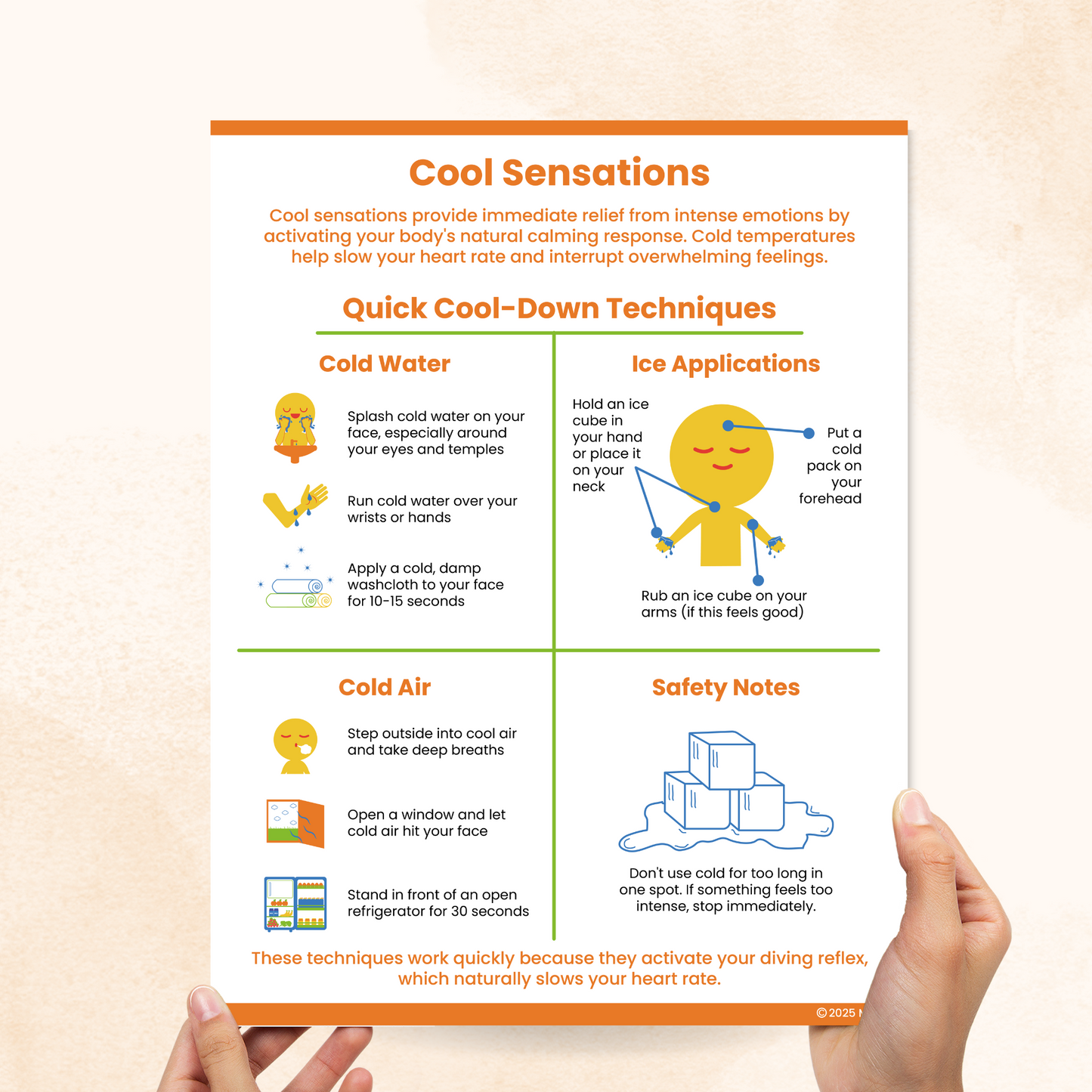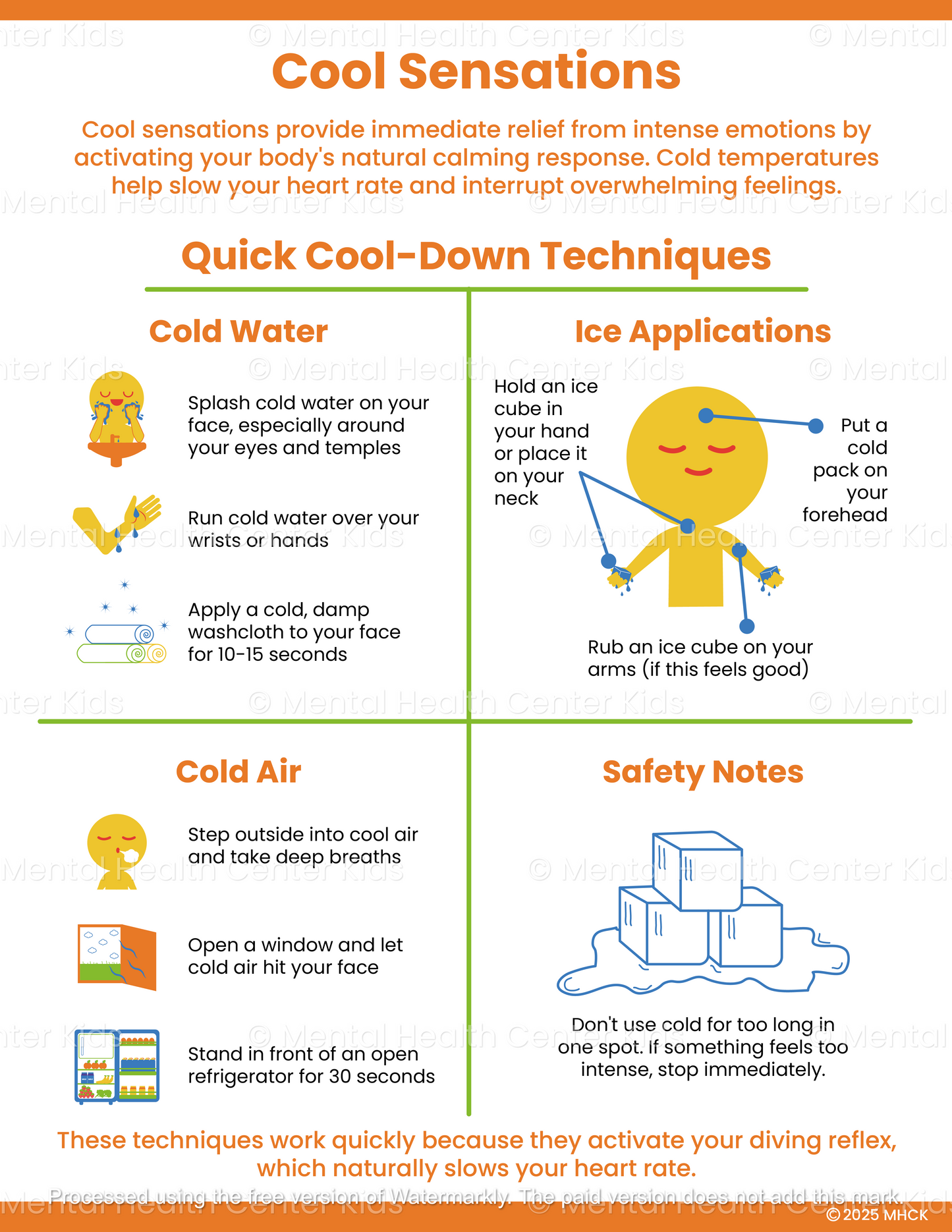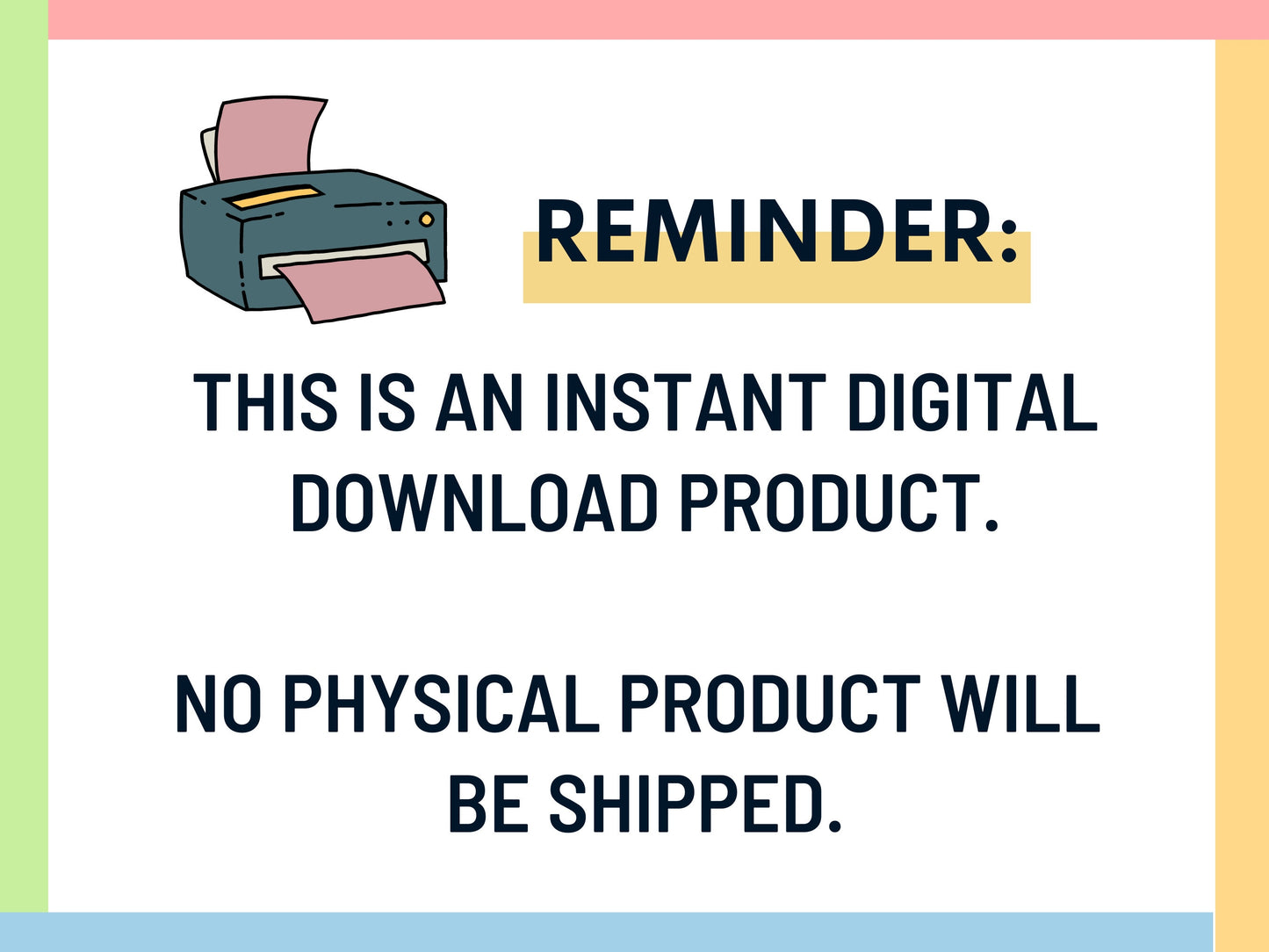Cool Sensations (PDF)



When emotions run high, many of us are told to just “calm down” — but rarely are we taught how. Coping skills that involve physical cooling have gained more attention in emotional regulation programs. They work effectively, are easy to implement, and have been used in many behavior support approaches for years.
The Cool Sensations handout walks clients through simple ways to bring their body back to calm using the power of cold temperature. It teaches techniques like splashing the face or hands with cool water, holding an ice pack on certain areas, or standing near sources of cool air — like an open fridge or window. A safety note is also included, reminding clients not to apply cold for extended periods.
Once kids and teens understand how their body reacts to cold, they can begin using these short cooling moments to enter a more focused state. Whenever they are experiencing big emotions, they can remind themselves that it’s not about escaping the feeling, but managing it long enough to be able to think more clearly.
Caring adults can suggest an easy routine, like keeping a washcloth in the fridge or stepping outside before reacting. Even one short session can act like a “reset button” — it reminds kids that they don’t have to stay stuck in a big feeling.
*This item is an instant digital download. A link to download your files will be emailed to you once payment is confirmed.
Want more resources like this? Check out our full catalog of coping skills worksheets and handouts.
References:
- Backer‐Grøndahl, A., Nærde, A., & Idsoe, T. (2018). Hot and cool self‐regulation, academic competence, and maladjustment: Mediating and differential relations. Child Development, 90(6), 2171-2188. https://doi.org/10.1111/cdev.13104
- Chang, S., Vaingankar, J. A., Seow, E., Samari, E., Chua, Y. C., Luo, N., Verma, S., & Subramaniam, M. (2023). Understanding emotion regulation strategies among youths: A qualitative study. Journal of Adolescent Research, 40(1), 44-65. https://doi.org/10.1177/07435584231161002
- Lawler, J. M., Pitzen, J., Aho, K. M., Ip, K. I., Liu, Y., Hruschak, J. L., Muzik, M., Rosenblum, K. L., & Fitzgerald, K. D. (2022). Self-regulation and psychopathology in young children. Child Psychiatry & Human Development, 54(4), 1167-1177. https://doi.org/10.1007/s10578-022-01322-x
- Willoughby, M., Kupersmidt, J., Voegler-Lee, M., & Bryant, D. (2011). Contributions of hot and cool self-regulation to preschool disruptive behavior and academic achievement. Developmental Neuropsychology, 36(2), 162-180. https://doi.org/10.1080/87565641.2010.549980
- Instant digital download
- File: PDF
- Size: 8.5" x 11"




